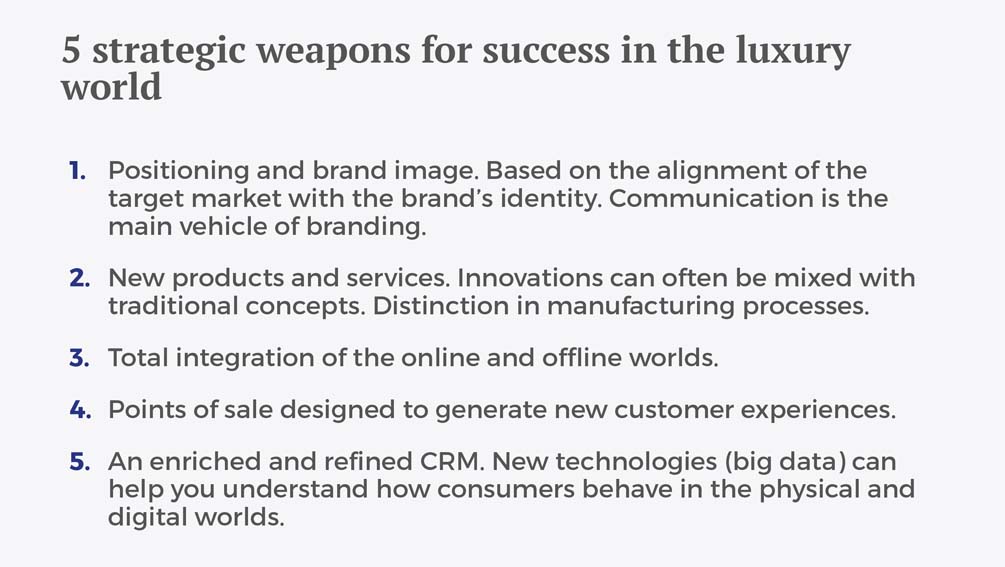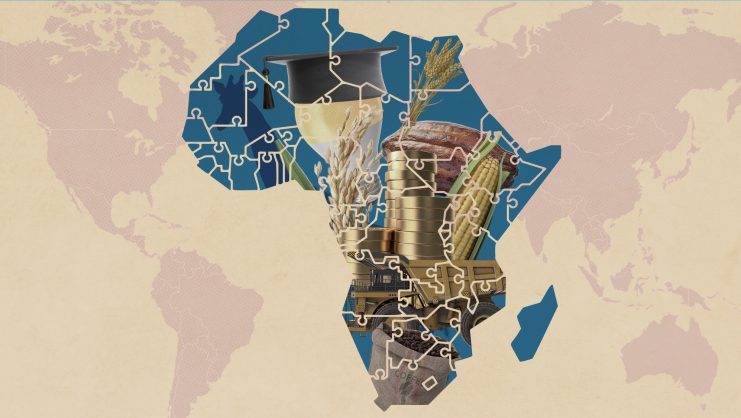Branding, exclusivity, design, personalization… Thanks to common characteristics that set it apart, the luxury world has largely been isolated from the ups and downs that affect other markets. However, besides these characteristics, nowadays you must also consider other factors within the framework of a profound strategic management approach. The new model is loaded with paradoxes and innovations that originated in the digital and communication sectors.
The following dichotomies hint at a strategy that allows luxury brands to distance themselves from their rivals:
- Tradition vs. innovation.
- Craftsmanship vs. technology.
- Off vs. on.
- Luxury vs. vertical offerings.
- Millennials vs. seniors.
- Global vs. local.
- Permanent range vs. novelty.
- Discernment vs. ostentation.
For any product or service positioned in the luxury world, the formula for success is to combine these and other contradictions.
For a while, everything on the market was starting to look the same, but now we are starting to see products whose main source of added value is innovation.
Identity and omnichannel strategy
But first things first… Identity and positioning are the cornerstone of the strategy. The desired branding arises from the alignment of the target market with the brand’s identity. Communication is built on this formula and, in today’s highly connected world, communication strategies must be based on an omnichannel approach.
Like their customers, brands travel constantly between the online and offline worlds, making it necessary to activate key performance indicators (KPIs) to learn more about when, where, and how customers encounter the brand. A brand can enrich its capital through associated content that generates value and loyalty in various channels.
Co-branding provides important advantages in this regard: co-creation, advocates, other brands, and third-party links can make the process even more enriching. Blancpain’s association with gourmet cuisine, Dior’s association with top pastry chef Pierre Hermé, and Vuitton’s association with Supreme show that luxury is increasingly integrating with and adapting to new lifestyles.
Innovation in service
As you can see, the first step to develop an effective strategy is to create a well-built brand that is engaged with the public. The next step is to focus on the product or service, where novelty and innovation will once again set the tone.
For a while, everything on the market was starting to look the same, but now we are starting to see products whose main source of added value is innovation. Vehicles that practically drive themselves, smart tailoring workshops equipped with 3D printers, connected suits, new production materials, embedded smart devices… You can sense quality and distinction not only in the products but also in the manufacturing processes.
Nowadays, differentiation and sustainability go hand in hand. In this sense, sustainability is understood to benefit both the customer and the community as a whole. Loewe, for example, approaches its craftsmanship with a modern vision, while the models of Kering and LVMH are steeped in a culture of responsibility.
Beyond browsing, searching, and buying particular products, the in-store experience should actually attract consumers.
New experiences at the point of sale
An omnichannel strategy naturally includes the point of sale. CRM development must take into account how customers behave in stores. Beyond browsing, searching, and buying particular products, the in-store experience should actually attract consumers. Points of sale should incorporate cafés, restaurants, or even museums—attractions that any shopper would feel compelled to visit. The digital component provides the key to CRM by revealing how customers move about the store and what their preferences are. On this front, Burberry and Hermès set the bar for the rest of the luxury market.
If you want to keep growing in the luxury market, there’s no such thing as too much innovation.
© IE Insights.












